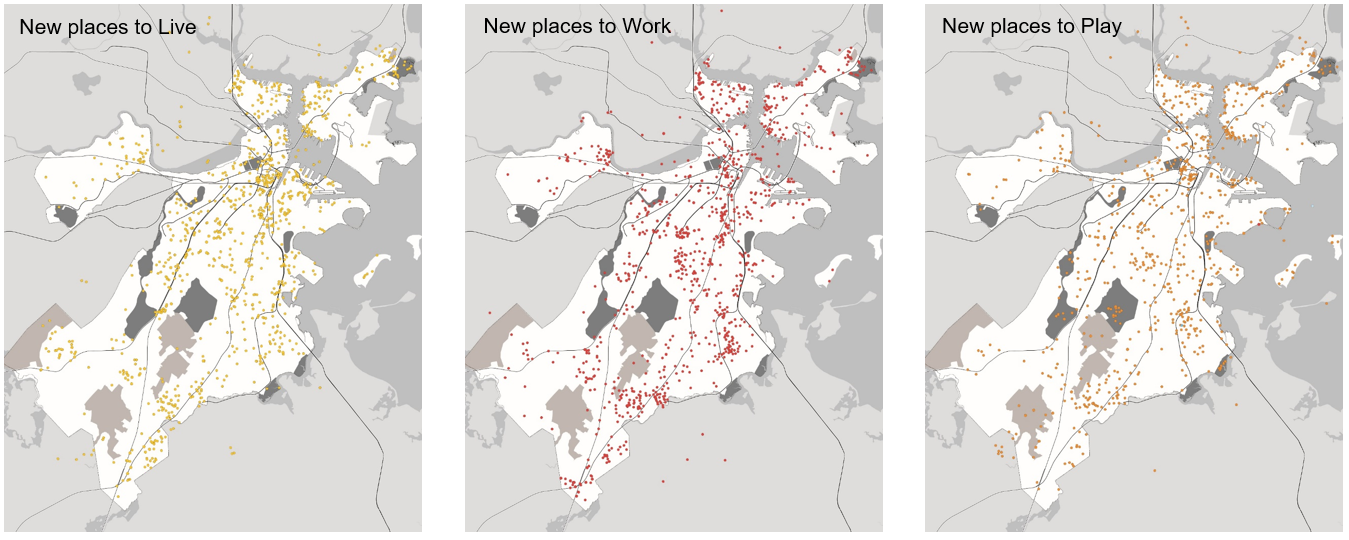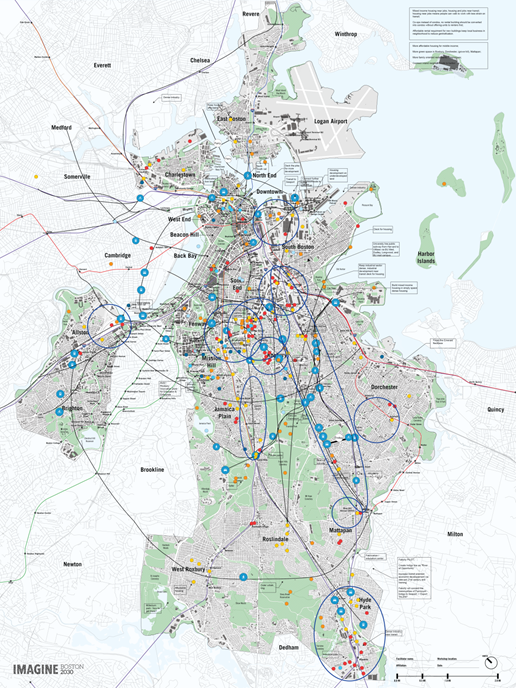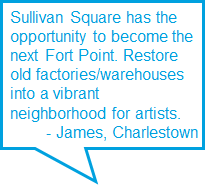Imagine Boston 2030 workshops identify priorities to enhance and improve Boston neighborhoods
As part of our community engagement process, we have talked to more than 10,000 people across the City.
This spring, we hosted eight workshops in Roxbury, East Boston, Dorchester, Charlestown and Chinatown where residents discussed their priorities for enhancing Boston neighborhoods and identified areas for transformation and growth.
As part of our community engagement process, we have talked to more than 10,000 people across the City. One of the methods that we used to connect with communities were workshops, where we met with more than 250 people who participated in English, Chinese, Spanish, Haitian Creole and Cape Verdean Creole. Together, nearly 50 maps were completed, showcasing participants’ ideas for new places to live, work, and play, as well as highlighting the opportunity areas prioritized by each small group for growth and transformation.
What conclusions did participants at the community workshops come to?
At community workshops around the city, Bostonians shared a vision of mixed-use, mixed-income neighborhoods where home, work and play are closer together. Residents want growth and enhancement in neighborhoods throughout the city.
Throughout, we heard a widespread desire for improved service on existing transit routes, especially buses and the Fairmount line. We also heard a desire for new crosstown transit routes to connect neighborhoods to each other and to jobs. Workshop participants envisioned places like Downtown and the Longwood Medical Area becoming more mixed-use, with new housing for different income levels, jobs for different skill levels, and new open spaces.
At our East Boston workshop, there was tremendous interest in improving connections between East Boston and the rest of the city, particularly to downtown Boston (i.e. bike access, ferry), and increasing connectivity within East Boston. Eastie residents emphasized the opportunity of Suffolk Downs and the East Boston waterfront, imagining them as vibrant districts that could retain the multiculturalism and affordability that residents love about the neighborhood.
In Roxbury, Dudley Square emerged as the top area for opportunity, with residents imagining it with a more vibrant business district, new jobs, and diverse housing stock that serves existing residents and provides homes for people of all incomes and ages. There was also a lot of excitement around new transit connections that would circle the city, enabling residents to get from Roxbury, Hyde Park, and Mattapan to existing job centers like Longwood, and potential new job centers like Beacon Yards in Allston. Other ideas stemming from the workshop included enhancing Readville, a neighborhood south of Roxbury, as an industrial job center, which could be assisted by improved service on the Fairmount Line.Many Dorchester community workshop participants pointed to enhancing neighborhoods like Dudley Square, Bowdoin/Geneva, and Field’s Corner. Participants envisioned neighborhood jobs and more local businesses, accompanied by job training and English language programs to help residents access jobs. For these residents, improvements in transportation were priorities, with different groups focusing on improved bus service, bicycle connections, and pedestrian connections. Residents also wanted to see more places to eat, shop and play in Fields Corner, Dudley, and Bowdoin/Geneva, including stores, restaurants, family friendly green spaces, sports facilities, and a movie theater.
At our community workshop in Mattapan, participants talked about improving access to public transit, in particular, connecting Mattapan to job centers like Longwood. Attendees also spoke of the importance of workforce training, improved open space and affordable housing. These priorities for investment were echoed in some of the major themes discussed, with residents specifically noting vibrant streets with more retail and cultural amenities as crucial, especially in Mattapan Square.
At our Charlestown community workshop, it became clear that residents are eager to activate the waterfront through improved access, ferries, and more open spaces. Participants gave significant attention to Sullivan Square as an opportunity area, envisioning it as a new center within Charlestown, with housing and neighborhood stores. Improving and expanding ways to get around, from transit to ferries to pedestrian and bike paths, was a key focus for some, while others emphasized vibrant main streets with ground-floor “mom and pop” retail as important.Many participants at our Chinatown community workshop emphasized Chinatown residents’ clear priorities for how to improve their neighborhood, with affordable housing emerging as a major theme. Participants also pointed to improved access from the community to major open space assets like Castle Island and Franklin Park, and new cultural facilities in Chinatown, as priorities for investment.
Check out our Facebook page to view photos from our workshops. If you didn’t get the opportunity to participate in our first wave of community workshops, there are a number of other ways to contribute to Boston’s first citywide plan in 50 years. Share your ideas and connect with us on Twitter, Facebook and Instagram using #ImagineBoston. You can also sign up for Imagine Boston updates.




